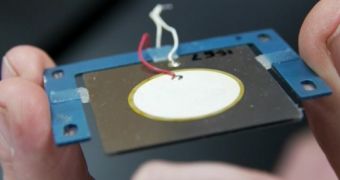Besides the storage unit, there is one other part of an electronic device that determines how thin said device can be, not counting the actual case: the cooling technology used.
There are some tablets today that are already very thin, but there is always room for improvement, as many people would like to say.
Super-slim, flexible displays are too far off though, regardless of Samsung's new patents, so it falls to other facets of consumer electronics to provide a solution.
Using passive cooling already helps a lot. Active cooling relies not just on fans, which take a lot of space on their own, but also on enough free room for air to move.
Making do with heatsinks, and particularly conductive case materials, has served tablet makers well, and ultrabooks too.
GE thinks it can do better though. The company has announced a major technology breakthrough, called DCJ.
Short for Dual Piezoelectric Cooling Jets, DCJ behaves as a micro-fluidic bellows (air pump used to stoke flames).
Essentially, jets of cool air are funneled at electronic components, increasing the heat transfer rate to more than ten times that of natural convection.
Basically, GE's DCJ is an active cooling solution that is even thinner than passive ones. What is ironic is that the technology was first developed for aircraft engines, wind turbines and power generators, not consumer electronics.
"DCJ was developed as an innovative way to dramatically reduce the amount of pressure losses and loading characteristics in aircraft engines and power generation in gas and wind turbines," said Peter de Bock, lead electronics cooling researcher at GE Global Research.
"Over the past 18 months we have addressed many challenges adapting this technology in areas of acoustics, vibration, and power consumption such that the DCJ can now be considered as an optimal cooling solution for ultra-thin consumer electronics products."

 14 DAY TRIAL //
14 DAY TRIAL //